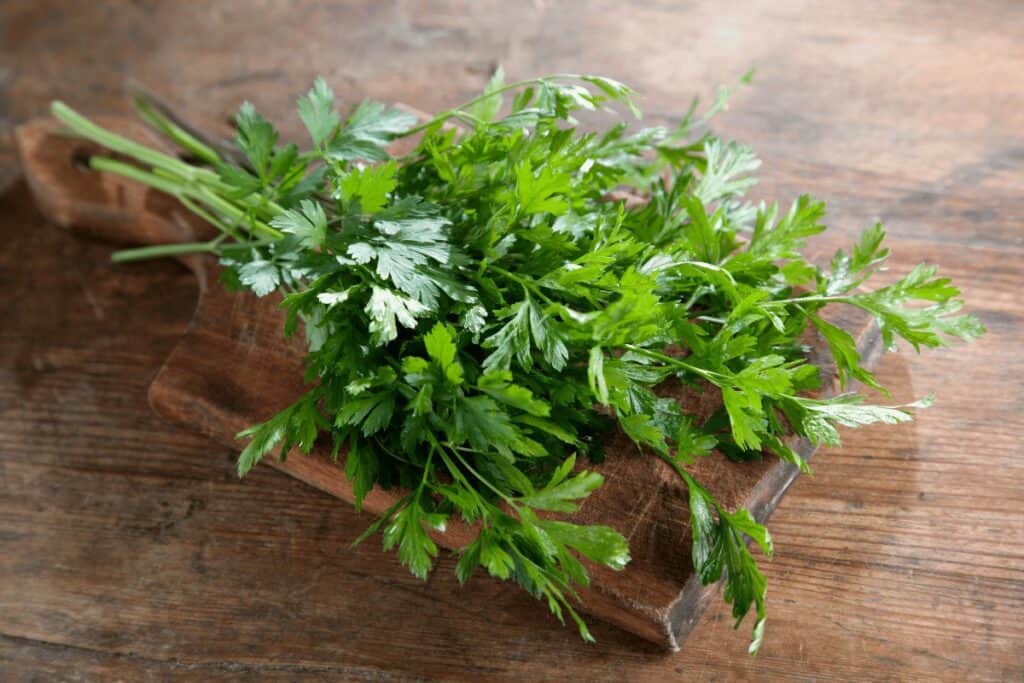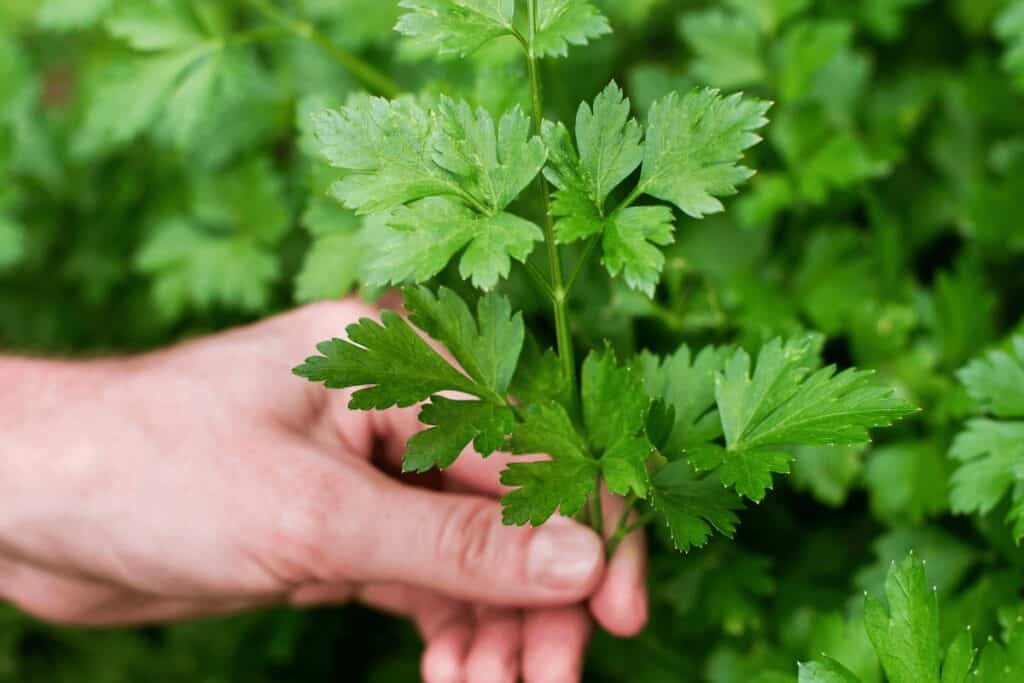Parsley is a popular herb commonly used for its leaves in cooking, but did you know that the seeds of this herb can also be grown and used for various culinary purposes? Growing parsley from seeds is relatively easy and straightforward, but there is some confusion surrounding the requirements for germination.
One of the most common questions is whether parsley seeds need light to germinate. In the article Do Parsley Seeds Need Light To Germinate? we will explore this question in depth and provide all the information you need to know to successfully grow parsley from seeds.
Understanding the Germination Process
Before we dive into the light requirements for parsley seed germination, it is important to understand the process of germination. Germination is the process by which a plant grows from a seed to a seedling. During this process, the seed absorbs water, the seed coat splits open, and the embryonic plant begins to grow. This process is triggered by several factors, including temperature, water, and light.
Does Parsley Need Light to Germinate?
The short answer to this question is no, parsley seeds do not need light to germinate. However, light can have an impact on the germination process and the overall health of the seedlings.
Parsley (Gigante D’Italian)

*100+ Seeds* Fresh Herb Seed
About this item
- Caribou Seed Company: 100% Made In Canada,
- We ship from Southern Ontario!
- 100+ organic, non-GMO seeds
- adds excellent flavor to all your culinary dishes
- very easy to grow and requires little maintenance
Parsley seeds are photo blastic, which means that they are responsive to light. When exposed to light, the seeds will germinate faster and the seedlings will grow stronger and healthier. On the other hand, when seeds are kept in the dark, germination may be slower and the seedlings may be weaker.

How to Germinate Parsley Seeds
Now that you know that parsley seeds do not need light to germinate, let’s take a look at the best methods for growing parsley from seeds.
- Soak the seeds in water for 24 hours before planting. This will help to soften the seed coat and speed up germination.
- Fill a seed tray or pots with good quality seed compost and moisten the compost thoroughly.
- Place the seeds on top of the compost and cover them with a layer of compost.
- Place the tray or pots in a warm, bright place and keep the compost moist but not waterlogged.
- Germination will typically take place within 7-14 days. Once the seedlings have emerged, they can be transplanted into individual pots or into the garden.
Light Requirements for Parsley Seedlings
LED Plant Grow Lights Strips for Indoor Plants

A Full Spectrum with Auto ON & Off Timer, T5 Sunlike Grow Lights Bar Growing Lamps for Greenhouse Shelves Hydroponics Succulent, 4 Dimmable Levelsne-liner about the best popcorn machine in the universe.
- Samsung&Sunlight Full Spectrum. 6 pcs light bar brighter than other plants grows light and lower heat
- Timing Function & Auto ON / OFF
- Easy to install
- 4 Brightness Settings & Dual-Channel
Once the seedlings have emerged, they will require light to grow strong and healthy. Place the seedlings in a bright, sunny location or under artificial light. The seedlings will also benefit from being kept at a consistent temperature of around 68°F.

What Do You Use Parsley for In Cooking
Parsley is a versatile herb that is widely used in cooking for its fresh, bright flavor and health benefits. Here are some of the most common ways parsley is used in cooking:
- Garnishing: Parsley is a popular herb for garnishing dishes, providing both color and flavor to plates. Fresh parsley leaves are often chopped and sprinkled over finished dishes as a finishing touch.
- Seasoning: Parsley can be used as a seasoning herb, adding its fresh flavor to a variety of dishes. Finely chopped parsley can be added to soups, sauces, stews, and marinades, adding a bright pop of flavor.
- Pesto: Parsley can be used as the main herb in a classic pesto sauce, along with basil, garlic, and Parmesan cheese. This sauce is typically used as a pasta sauce or spread, but can also be used as a topping for grilled meats, vegetables, and more.
- Salad dressing: Parsley can be used to add flavor to salad dressings, both as a herb and as a green. Fresh parsley leaves can be blended into a vinaigrette dressing or used as a base for a creamy dressing.
- Herbs de Provence: Parsley is one of the herbs traditionally used in the classic blend of herbs de Provence, along with thyme, rosemary, and basil. This blend is commonly used in Mediterranean cooking to add flavor to meats, vegetables, and stews.
Overall, parsley is a versatile herb that adds fresh, bright flavor to a variety of dishes. Whether you’re using it to garnish a plate or as a key ingredient in a sauce, parsley is sure to add a pop of flavor and freshness to your cooking.
History of Parsley
Parsley is a popular herb with a rich history that dates back thousands of years. It is believed to have originated in the central Mediterranean region and was used both for culinary and medicinal purposes.
- Ancient Times: Parsley was well-known to the ancient Greeks and Romans, who used it as a garnish, seasoning, and medicine. The Greeks considered parsley to be a symbol of death and used it in funeral wreaths, while the Romans believed it had the power to ward off evil spirits and used it in their feasts.
- Middle Ages: During the Middle Ages, parsley was widely used in Europe for both its culinary and medicinal properties. It was believed to have digestive and diuretic properties and was used to treat a variety of ailments including indigestion and urinary problems.
- Renaissance: During the Renaissance, parsley was an important ingredient in the cuisines of Europe and was used in a variety of dishes, including stews, sauces, and soups. It was also used as a garnish and was often used to decorate platters of food.
- Modern Times: Today, parsley continues to be a popular herb around the world and is used in a wide range of cuisines. It is valued for its bright, fresh flavor and its versatility, and is used in a variety of dishes, from soups and stews to salads and sauces.
Overall, parsley is a flavorful herb with a rich history that has been valued for thousands of years for its culinary and medicinal properties. Whether you’re using it to add flavor to your cooking or as a natural remedy, parsley is a herb with a long and storied history that continues to be a staple in kitchens and gardens around the world.
Conclusion
In conclusion, parsley seeds do not need light to germinate, but light can have a positive impact on the germination process and the overall health of the seedlings. When growing parsley from seeds, be sure to soak the seeds in water, use a good quality seed compost, and keep the seedlings in a bright, sunny location or under artificial light. With these simple tips, you can successfully grow parsley from seeds and enjoy its delicious leaves in your cooking.
FAQs
Can parsley seeds be grown indoors?
Yes, parsley seeds can be grown indoors. Simply follow the steps for germinating parsley seeds and place the seedlings in a bright, sunny location or under artificial light.
How long does it take for parsley seeds to germinate?
Typically, parsley seeds will germinate within 7-14 days when grown under ideal conditions. The actual time may vary depending on the temperature, water, and light conditions.
How deep should parsley seeds be planted?
Parsley seeds should be planted at a depth of around 1/8 inch to 1/4 inch. This will help to ensure that they are covered by enough soil to keep them moist and protect them from light, which can slow down germination.
How often should I water parsley seedlings?
It is important to keep parsley seedlings consistently moist, but not waterlogged. Check the soil regularly and water it as needed to keep it evenly moist. Do not allow the soil to dry out completely, as this can harm the seedlings and slow down growth.
Can parsley seeds be grown in the winter?
Parsley is a hardy herb that can be grown year-round in many climates. However, in colder climates, it is best to grow parsley indoors during the winter months to ensure that the seedlings receive enough light and warmth for optimal growth.
By following these simple tips and providing the proper conditions, you can successfully grow parsley from seeds and enjoy the fresh, flavorful leaves in your cooking. Whether you are a seasoned gardener or just starting out, growing parsley from seeds is a simple and rewarding project that is sure to provide delicious results.
Latest Posts
- What Types of Lettuces Can You Grow?

- How to Plant Onion Seeds for Maximum Germination

- How to Plant Parsnip Seeds for Maximum Germination

- How to Plant Mushroom Seeds for Maximum Germination

- How to Plant Lettuce Seeds for Maximum Germination

- How to Plant Kale Seeds: A Step-by-Step Guide to Maximum Germination Success!





